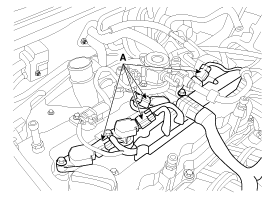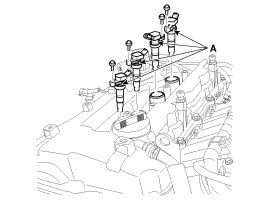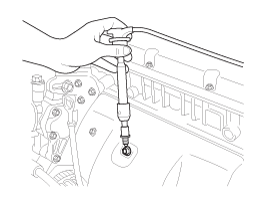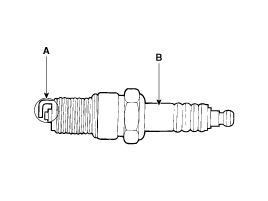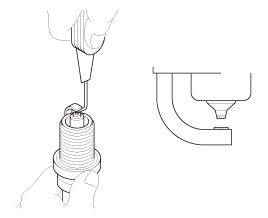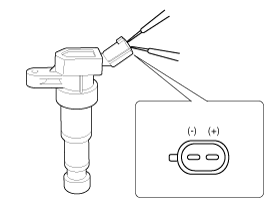 Kia Sportage: Repair procedures
Kia Sportage: Repair procedures
Third generation SL (2010Ц2016) / Kia Sportage SL Service & Repair Manual / Engine Electrical System / Ignition System / Repair procedures
| On-vehicle Inspection |
| Spark Test |
| 1. |
Disconnect the ignition coil connectors (A).
|
| 2. |
Remove the ignition coils (A).
|
| 3. |
Using a spark plug socket, remove the spark plug. |
| 4. |
Install the spark plug to the ignition coil. |
| 5. |
Ground the spark plug to the engine.
|
| 6. |
Check if spark occurs while engine is being cranked.
|
| 7. |
Inspect all the spark plugs. |
| 8. |
Using a spark plug socket, install the spark plug. |
| 9. |
Install the ignition coil. |
| 10. |
Reconnect the ignition coil connector. |
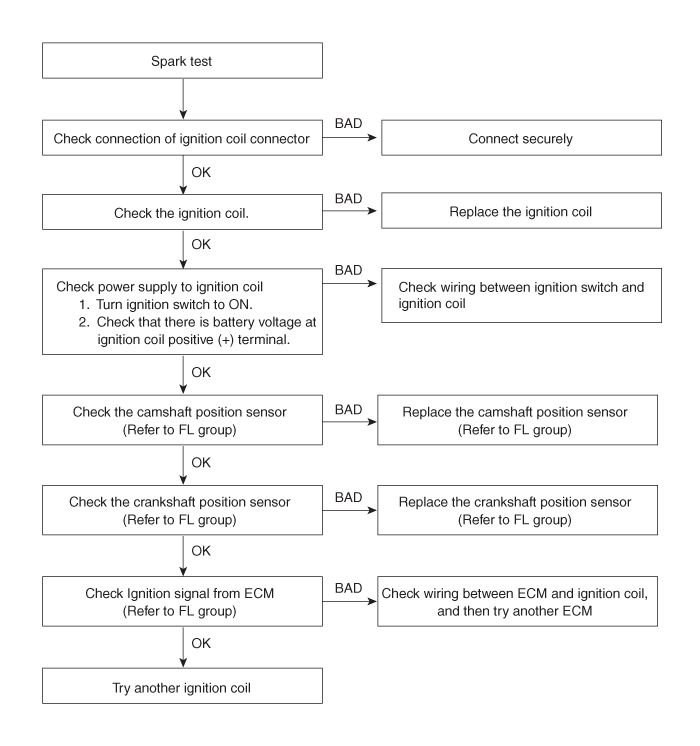
Inspect Spark Plug
| 1. |
Disconnect the ignition coil connectors (A).
|
| 2. |
Remove the ignition coils (A).
|
| 3. |
Using a spark plug socket, remove the spark plug.
|
| 4. |
Inspect the electrodes (A) and ceramic insulator (B).
Inspection Of Electrodes
|
| 5. |
Check the electrode gap (A).
|
Inspect Ignition Coil
| 1. |
Measure the primary coil resistance between terminals (+) and (-).
|
| Removal and Installation |
| 1. |
Disconnect the ignition coil connectors (A).
|
| 2. |
Remove the ignition coils (A).
|
| 3. |
Installation is the reverse of removal. |
 Description and Operation
Description and Operation
Description
Ignition timing is controlled by the electronic control
ignition timing system. The standard reference ignition timing data for
the engine operating conditions are preprogrammed in ...
 Charging System
Charging System
...
Other Information:
Good driving practices
Never move the gear shift lever from P (Park) or N (Neutral) to any other
position with the accelerator pedal depressed.
Never move the gear shift lever into P (Park) when the vehicle is in mo ...
CVVT Oil Control Valve (OCV): Schematic Diagrams
Circuit Diagram
...
Categories
- Home
- Kia Sportage QL (2015-2019) Owners Manual
- Kia Sportage QL (2015-2019) Service Manual
- Kia Sportage SL 2010-2016 Owners Manual
- Kia Sportage SL 2010-2016 Service Manual
Copyright © www.kispmanual.com 2014-2025

